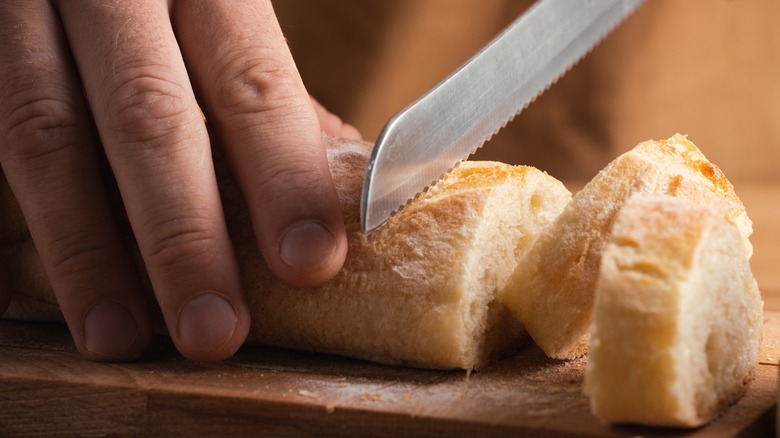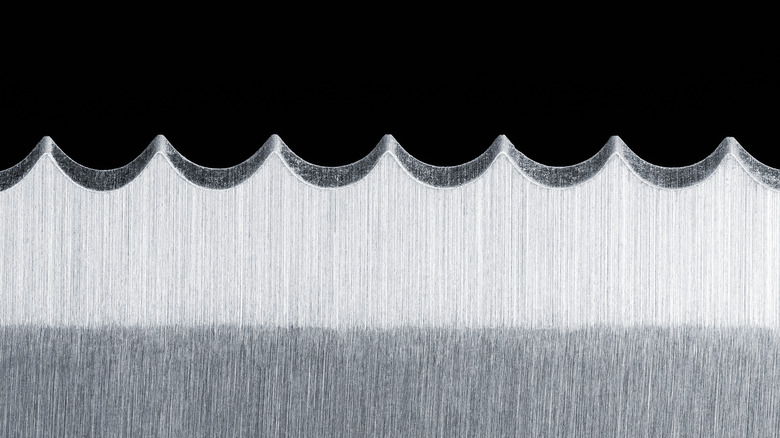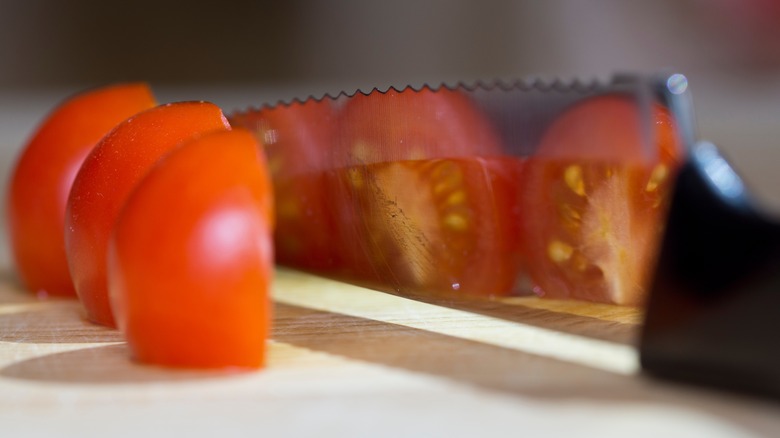How Do You Sharpen A Serrated Knife (And How Often Should You Do It)?
When you're attempting to create a stunning sear on a steak, a solid skillet is of the utmost importance, and if you want your cantaloupe chunks to wind up perfectly spherical, you're going to need a melon baller. However, when taking a general survey of the kitchen, it becomes readily apparent that the most essential implement in any chef's arsenal is their selection of sharpened knives. Here, sharp is arguably the operating term – chopping ingredients with dull knives is actually more dangerous for you, as it increases the potential for slippage and accidental cuts.
While the classic chef's knife is probably the most versatile carving tool for you to have on hand, it is far from the be-all and end-all of the slicing and sawing utensils. The minuscule paring knife is perfect for whittling away at produce peels, while a massive cleaving blade is required for vivisecting massive hunks of meat. One of the other most instantly recognizable styles of kitchen blade is the serrated knife, a tool that can be used for a variety of tasks, but is incredibly difficult to keep properly sharpened and honed.
The structure of a serrated knife
The kitchen blades that you are probably the most familiar with are straight, with a single slicing edge for your unsuspecting meal's ingredients. Serrated blades serve a different purposes, and as such, are constructed differently. Similar to a saw, a serrated knife has a set of teeth, which metaphorically bite into food as it is sliced into pieces. While in use, these teeth catch on food, which allows chefs to make clean cuts without expending excess force.
The jagged edge that makes a serrated knife such a useful kitchen tool is the same facet of the blade that can make it so difficult to keep sharp. The actual slicing is done by the long flat side of each tooth, so that is where any maintenance attempt needs to be focused. Fortunately, because serrated knives rely on friction and grip more than sharpness, it is easier to keep their kitchen ready. Your primary kitchen knife might need sharpening a handful of times each year, but your serrated blade can continue cutting cleanly for years.
How to keep your serrated knife's teeth sharp
Though your serrated blade needs to be sharpened less frequently than straight knives, when the time for maintenance does inevitably come around, getting past the blade's pointed teeth to care for their long, cutting edges. Certain purveyors of knives, like Misen, will personally care for a knife that you purchased from them. However, you will likely need to maintain the most serrated blades at home. You can do this with either a handheld or an electric knife sharpener, as well as a honing rod. Both methods will be ineffective if you aren't conscious of your knife's peaks and valleys. Finding a sharpener that is sufficiently flexible to let every bit of the blade's jagged edge come into contact with the sharpener. If you opt to use a ceramic honing rod, you will need to scrape it along each tooth individually.
If it is properly maintained, a serrated knife can be one of the most effective tools in your kitchen arsenal. The tool is often associated with slicing bread, but you should also be using a serrated knife to cut fruit.


